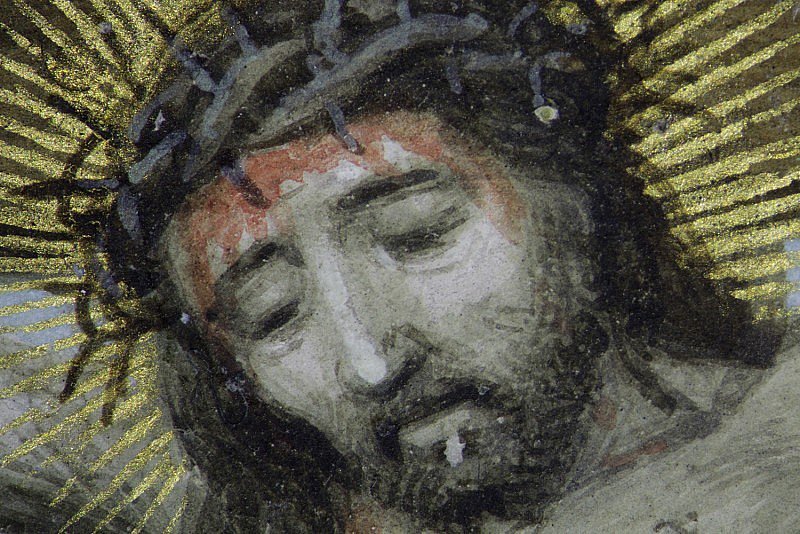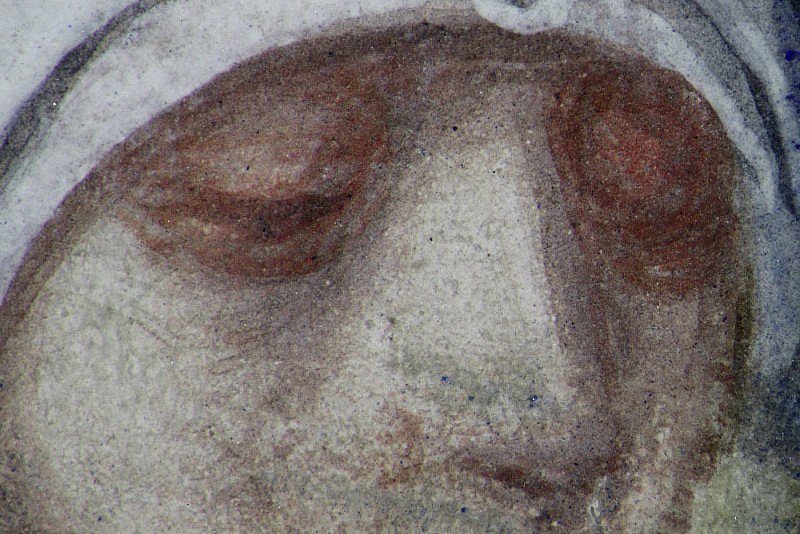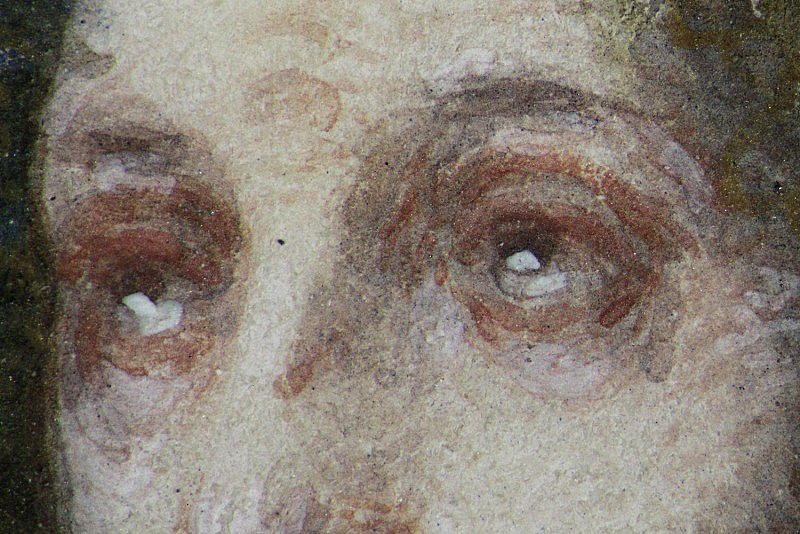Painting the flesh
Artists' Techniques
Bening painted flesh tones with complex mixtures, intentionally varied to suit the character and specific situation of the individuals depicted. In line with 16th-century practices, he used flesh tones to suggest the protagonists’ temperament – choleric in the case of the bad thief (MS 294a), melancholic in the case of the Damned (MS 294d). Bening also varied his treatment of flesh tones to distinguish between the living and the dead. The two Crucifixion scenes (MSS 294a, 3-1996) provide a study in ‘life colour.’



Crucifixion with Instruments of Christ’s Passion
Isolated in their grief, the figures of the Virgin and Saint John flank the cross. Displayed in the border are the Arma Christi, the Instruments of Christ’s Passion. These include the column and scourges of the Flagellation, the cockerel representing Saint Peter’s denial, a hammer, spear, sponge, pincers and three nails, which rest on the empty tomb.
Christ’s body has a slight yellow-green cast, achieved with a mixture of lead white, yellow ochre, and azurite modelled with strokes of grey-brown and cool white highlights, which also contain azurite (hotspot 1). St John and the Virgin, by contrast, were painted with rosier complexions of pink (lead white, red ochre, vermilion and an organic red) and grey-brown modelling over a white base layer, their eyes reddened with vermilion to express their grief (hotspots 2 and 3). This image, with its squat figures, was probably painted by one of Bening’s assistants, who followed literally the prescription in contemporary painting manuals for making a clear distinction in flesh tone paint mixtures between ‘the living’ and ‘the dead’.